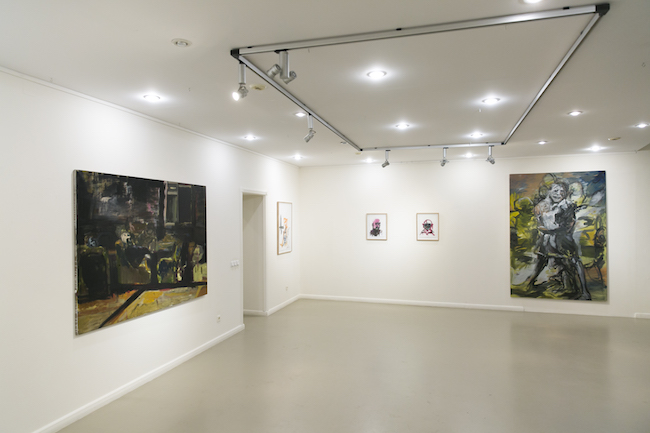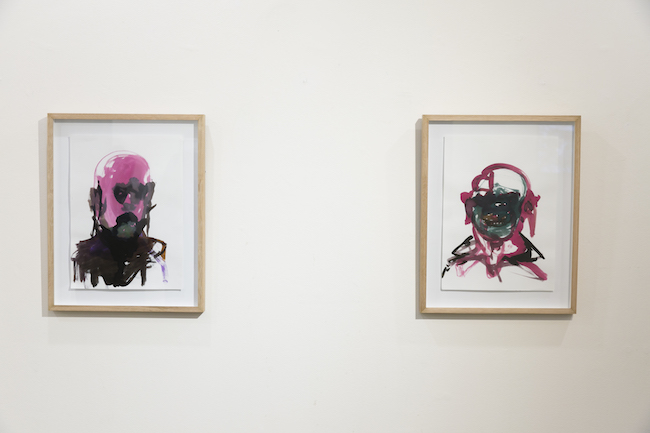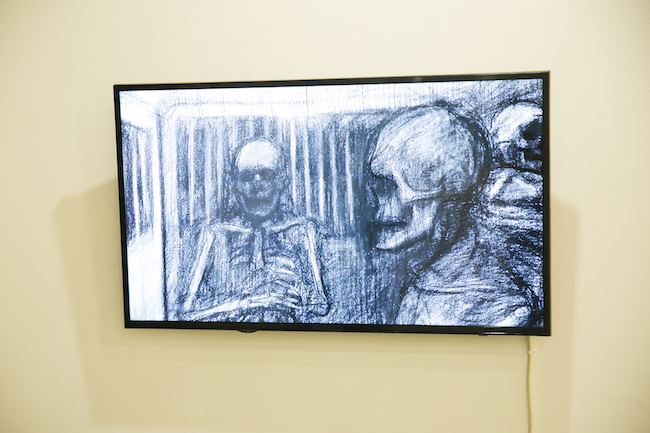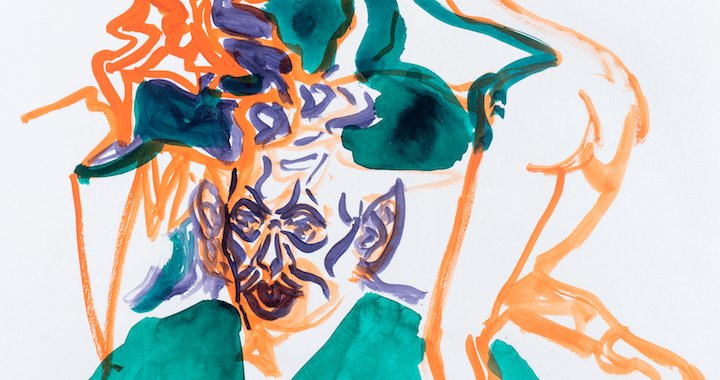
The Art Catcher
An express interview with Lithuanian artist Gintaras Makarevičius
12/12/2018
Painting.
If painting can be abstract, so can clouds.
I was painting a face, but I didn’t like it. Then a tree, but it didn’t convince me either; it looked too tree-like. I have realised I don’t want to paint things that already ARE.
How to join image and feeling or thought? Why does it matter?
The language of painting has its own grammar. It cannot be read either in words or sentences, but, clearly, it can be experienced and understood.
Painting is the art form that is most closely linked to the maker, since it can contain his psychophysical information and at the same time act as therapy, allowing one to stop time.
When concerts of art (I meant to write ‘concepts’) become wearisome, you want to recall the beginning.
What inspire most are senselessness and the process of painting, since therein lies freedom.
Gintaras Makarevičius
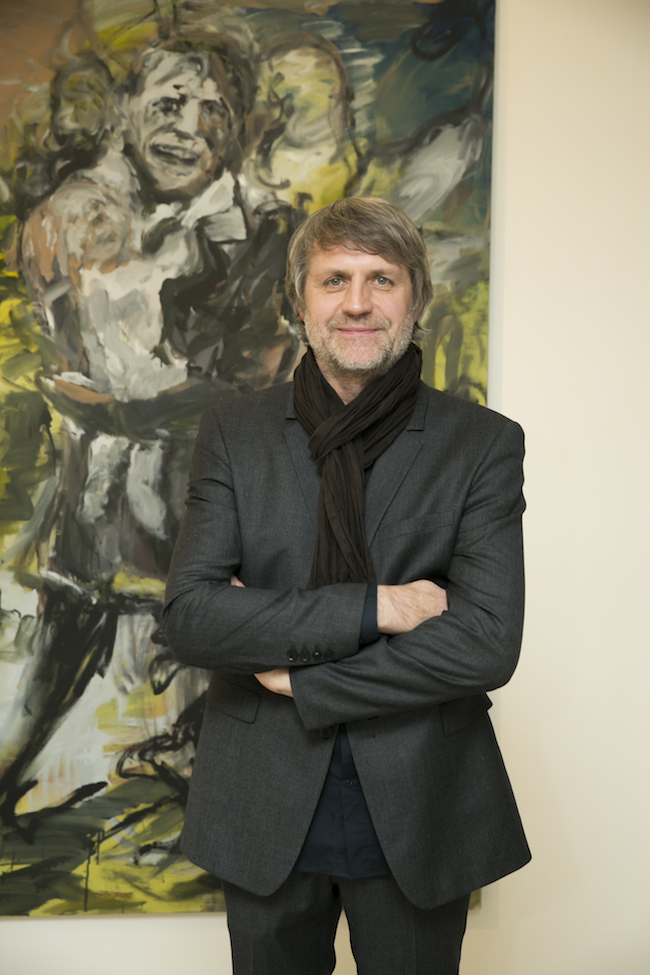
Gintaras Makarevičius is one of the most prominent representatives of Lithuanian contemporary visual art. In the 1990s he debuted as a creator of installations, objects and film documentaries. Quite quickly the young artist gained international recognition, participating in many international contemporary art exhibitions, such as Manifesta 4 (Germany, 2002) and La Rochelle International Film Festival in France (2005).
Photo: Marius Žičius
Although today his main occupation is painting, Makarevičius is also one of the most acclaimed Lithuanian screenwriters and documentary filmmakers. Ten years ago, he was even awarded with the main prize at the Lugano Film Festival for his documentary Winter Parallels. Two years ago, with his show Surrender, Makarevičius returned to the local art scene as a painter. His latest creations, under the title The Time Catcher, are on view at the Meno Niša gallery in Vilnius until January 11, 2019.
Arterritory.com offers an express interview with the artist as well as a photo report from the exhibition.
G. Makarevičius. Series Phantoms. 2018. Photo: Marius Žičius
Your exhibition The Time Catcher at the Meno Niša gallery is about time and the language of painting. What inspired you to turn to this subject?
When I say ‘the language of painting’, I mean that I care about the identity of painting, its essential principle, the sense of it… Since the process of painting cannot be captured (by any means adequate to it), because each stage is an inimitable ‘point’ of transit towards the completion of a painting and each one of these points can be the final one. Which of these points do I pick and why? How do I ‘catch’, in a process, a sense that whatever I see in front of me is actually what I was after? These and other questions were the reason I called the exhibition The Time Catcher.
.jpg)
G. Makarevičius. Untitled, 2018. Photo: Antanas Lukšėnas
Is painting a form of documentation?
Yes, painting is a documentation of my psychic and physical movements.
Most of your new paintings show figurative compositions and abstract portraits. Does human presence play an important role in your work?
I think that human figures or abstract portraits in my artwork are but structural frameworks for my painting. Because I always seek to transcend the explicable when I paint, the human figure remains the only identifiable thing; all else is an outcome of an uncontrollable (consciously so) process.
You’ve said that you “don’t want to paint things that already ARE”. Could you explain this thought a little more?
By that I mean that I don’t want to involve myself in illusionary depictions of objects on a plane – what they call realism.
G. Makarevičius video "On the Way". Photo: Marius Žičius
Although this is a painting exhibition, you’ve also added some video works to it. What are these videos about, and how do they complement the other works of art in The Time Catcher?
The video piece in the exhibition is a two-shot animation drawn in charcoal. Each shot was drawn on a single piece of paper, by erasing frames and drawing over them; this way, I could draw 32 iterations, because after that the surface was no longer suitable for drawing. This animated film is a sort of a replica, or reflection, of my painting method – when I paint, I usually start with an image in my head, but that image gets transformed in the process, sometimes unrecognisably. I call this a dialogue between the conscious and the unconscious, one that continues until the painting is finished.
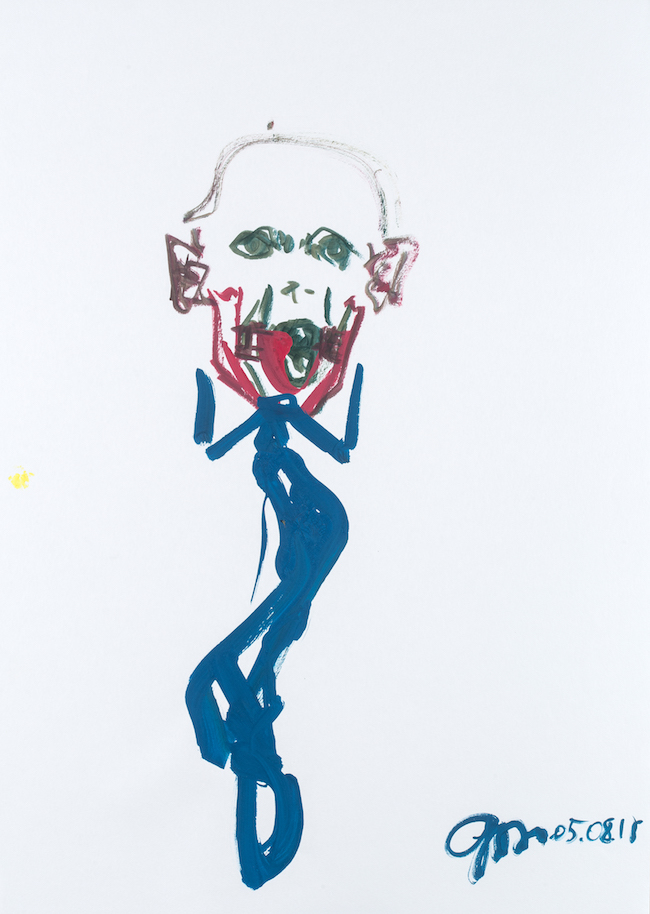
G. Makarevičius. Dancing Tie, 2018. Photo: Antanas Lukšėnas
